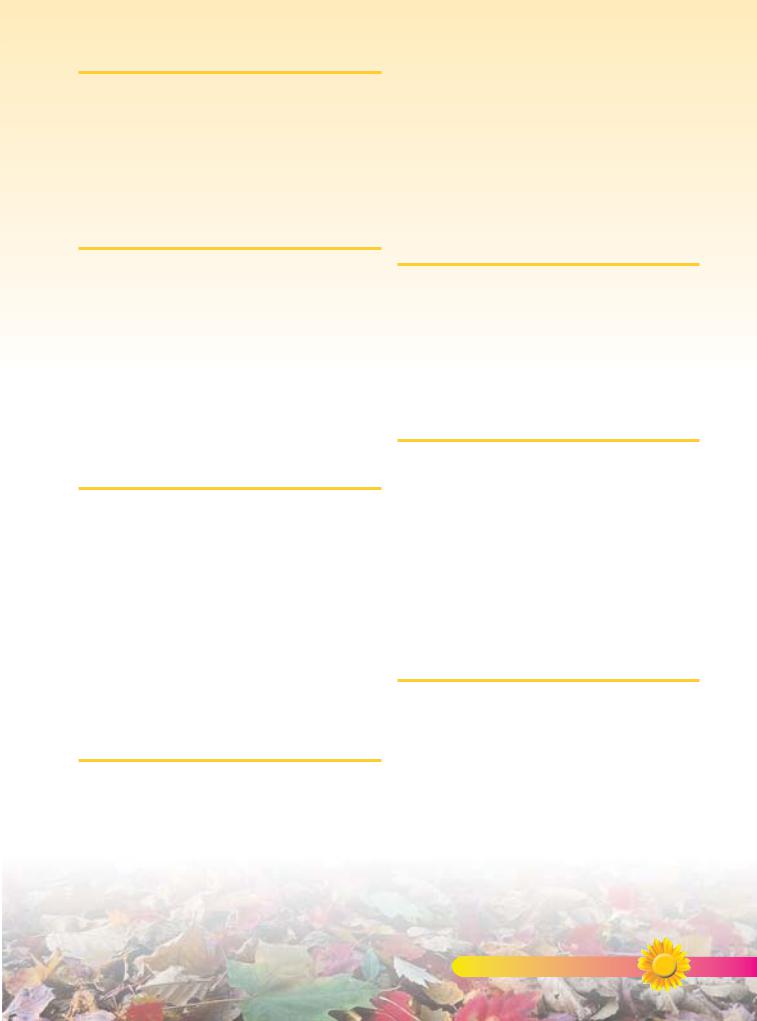
Games_and_activites for teachers
.pdf
What's the story behind it?
Show the students an object which belongs to you, for n example, a penknife, a bracelet, your jacket. Tell the class about the object and encourage the students to ask you questions.
Ask individual students if they would mind telling you the story behind an object of their own.
Where did it come from?
Write the name of an artefact in the middle of the board. Ask the students to say what it is made of or other questions designed to establish what the object or material was like in its previous state. Each time they suggest something, write it on the board and then repeat the question. For example, starting with the word 'shoe': (You: Shoe. What's it made of? Student: Leather. You: Right…where does leather come from? Student: From a cow. You: And what does a cow live on? etc.
Who, where and what?
Describe an object in the classroom, and at the end of the description ask, 'What is it?' Follow this with a description of a person who is known to the students. They must try to identify what or who you have described. (You: It's got two doors, it's green and I keep books in it. Student: The cupboard. You: She's wearing a mauve jersey and she's sitting in the middle of the room. Student: Wendy.) Once the activity has become understood, individual students describe people, places or objects for the rest of the class to identify.
Why have you got a monkey in your bag?
Empty a bag -yours or one of the students'. Go up to one of the students, give him or her the bag and ask: Why have you got a mon-
key in your bag? The student has to think of a convincing or original reason why there is a monkey in his or her bag. After giving the reason and answering any questions from the rest of the class, he or she then takes the bag and goes up to another student with the same question, only this time using another object, for example: Why have you got an axe in your bag? And so on. This is a good activity for lighthearted relaxation: after exams, for example, or at the end of term.
Words beginning with
Give a letter, and ask the students to write down as many words as they can that begin with it in two minutes. They can do this individually, or in pairs or small groups. Then they tell you what their words are and you write them up on the board. Encourage students to ask for explanations of words that any of them did not know.
Words out of…
Write up a selection of about ten disconnected letters scattered on the board, and ask students to use them to make words. Each letter may be used only once in each word. Make sure there are two or three vowels among them! For example: r, a, n, s, e, j, I, b, d, w, y, g. Students might suggest words like: grain, beg, angry, yes, begin. They can suggest the words directly to you to be written up immediately, or spend two or three minutes thinking of suggestions (individually, or in pairs or small groups) before pooling.
You write next
Each student has a sheet of paper, at the top which he or she writes a sentence: it can be a simple statement of fact or opinion, or a question. For example: It's very cold today. This is passed to a neighbor, who adds an answer, comment or further question and passes it on someone else. The activity can, of course, be done in pairs rather than by
GAMES AND ACTIVITES 305
